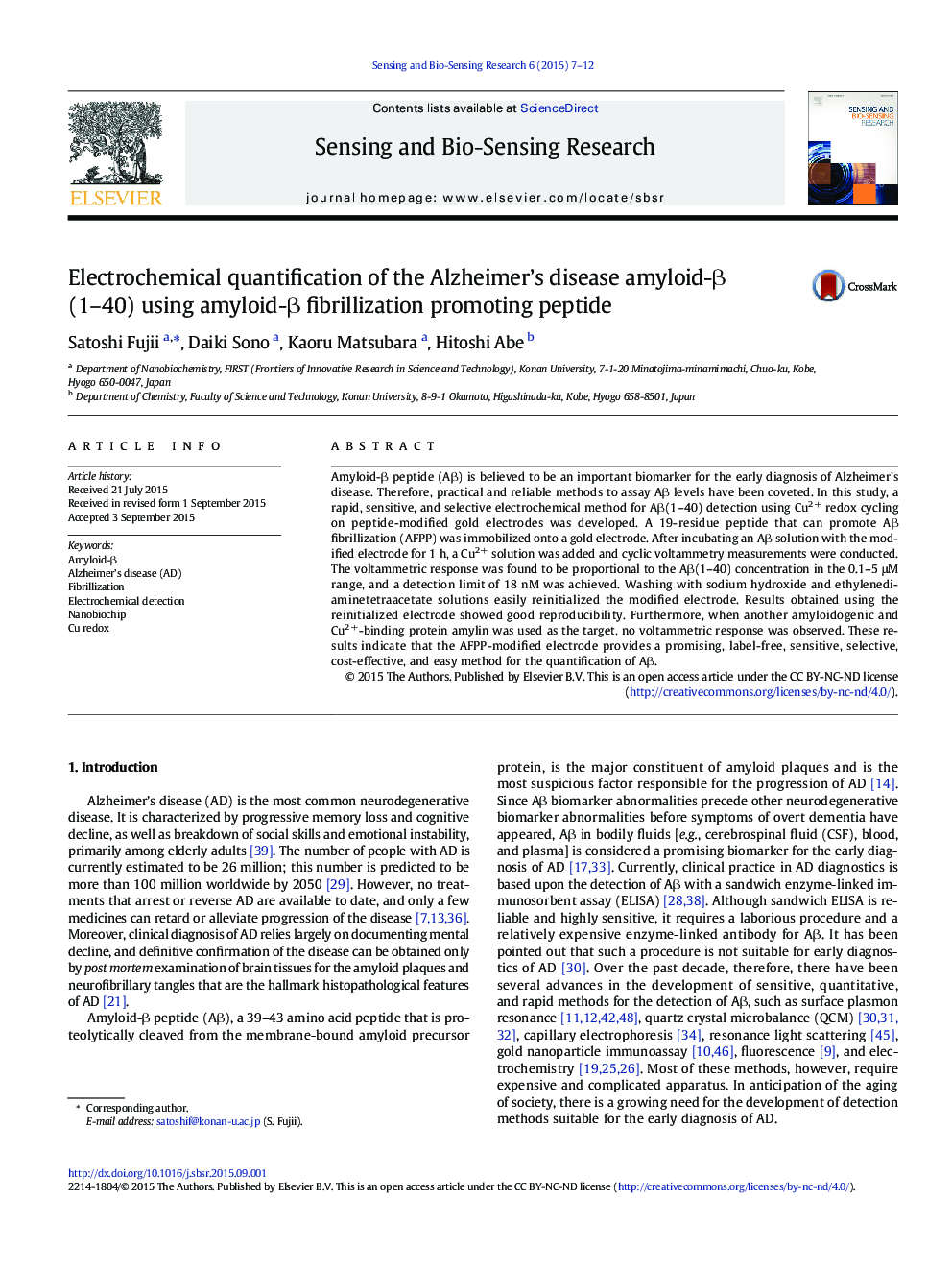| Article ID | Journal | Published Year | Pages | File Type |
|---|---|---|---|---|
| 804028 | Sensing and Bio-Sensing Research | 2015 | 6 Pages |
•We developed amyloid-β fibrillization promoting peptide (AFPP).•Amyloid-β peptide (Aβ) rapidly deposited onto a AFPP-modified electrode.•Quantitative analysis of Ab can be achieved with a AFPP-modified electrode and Cu2+.•The AFPP-modified electrode was easily reinitialized by washing.
Amyloid-β peptide (Aβ) is believed to be an important biomarker for the early diagnosis of Alzheimer’s disease. Therefore, practical and reliable methods to assay Aβ levels have been coveted. In this study, a rapid, sensitive, and selective electrochemical method for Aβ(1–40) detection using Cu2+ redox cycling on peptide-modified gold electrodes was developed. A 19-residue peptide that can promote Aβ fibrillization (AFPP) was immobilized onto a gold electrode. After incubating an Aβ solution with the modified electrode for 1 h, a Cu2+ solution was added and cyclic voltammetry measurements were conducted. The voltammetric response was found to be proportional to the Aβ(1–40) concentration in the 0.1–5 μM range, and a detection limit of 18 nM was achieved. Washing with sodium hydroxide and ethylenediaminetetraacetate solutions easily reinitialized the modified electrode. Results obtained using the reinitialized electrode showed good reproducibility. Furthermore, when another amyloidogenic and Cu2+-binding protein amylin was used as the target, no voltammetric response was observed. These results indicate that the AFPP-modified electrode provides a promising, label-free, sensitive, selective, cost-effective, and easy method for the quantification of Aβ.
Graphical abstractFigure optionsDownload full-size imageDownload as PowerPoint slide
